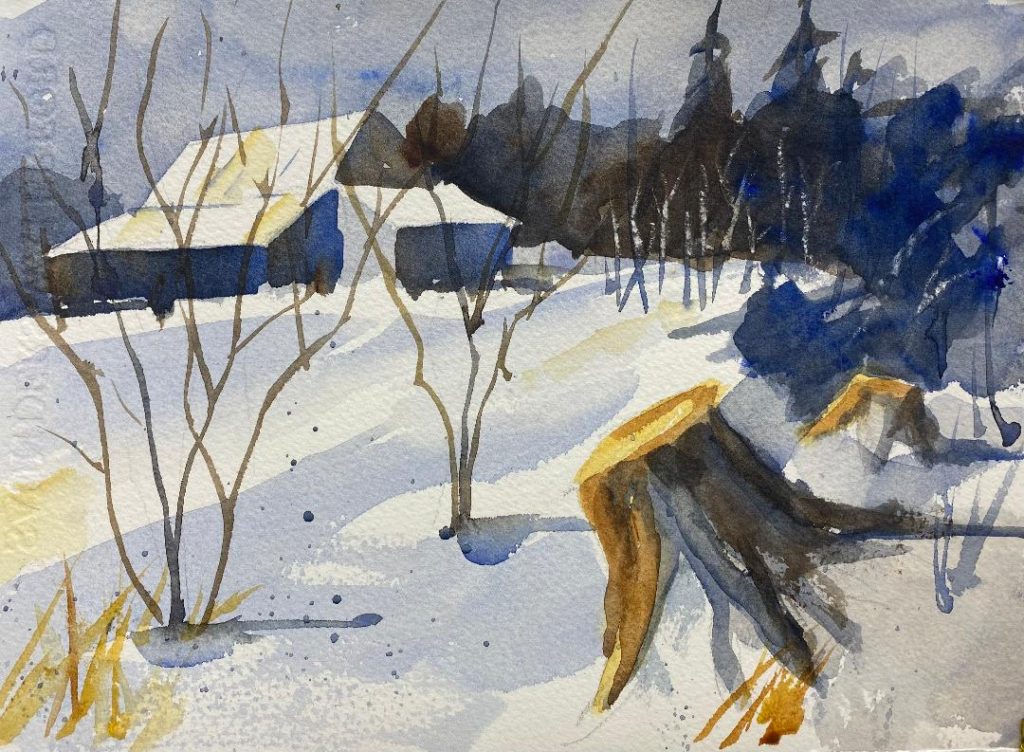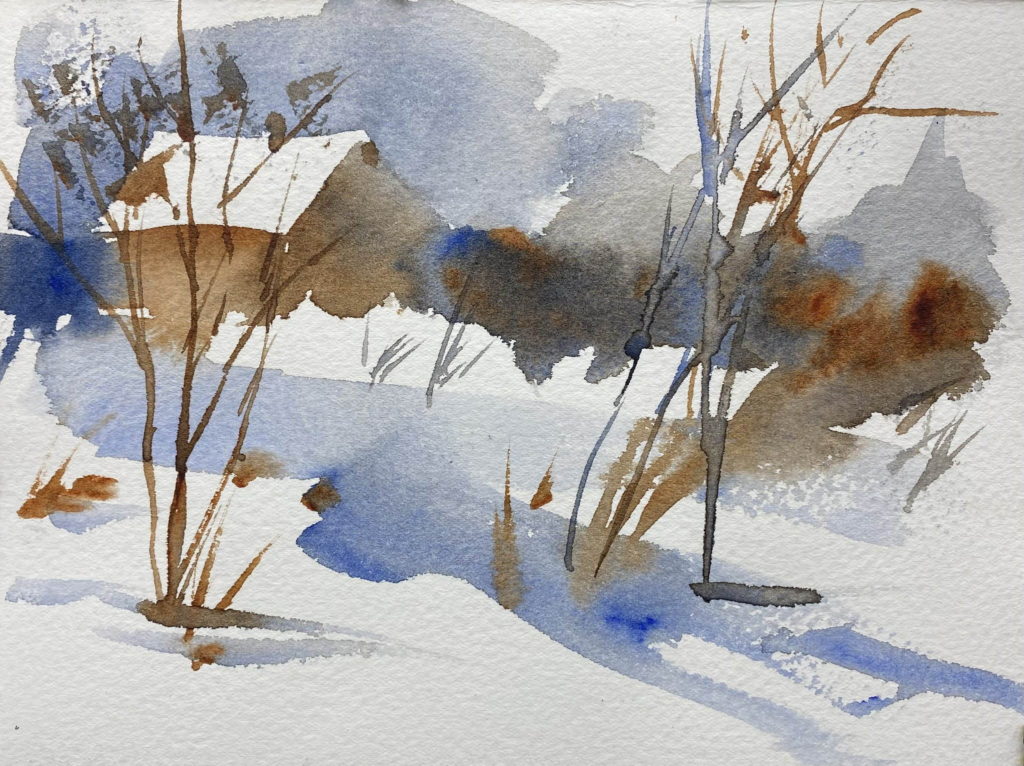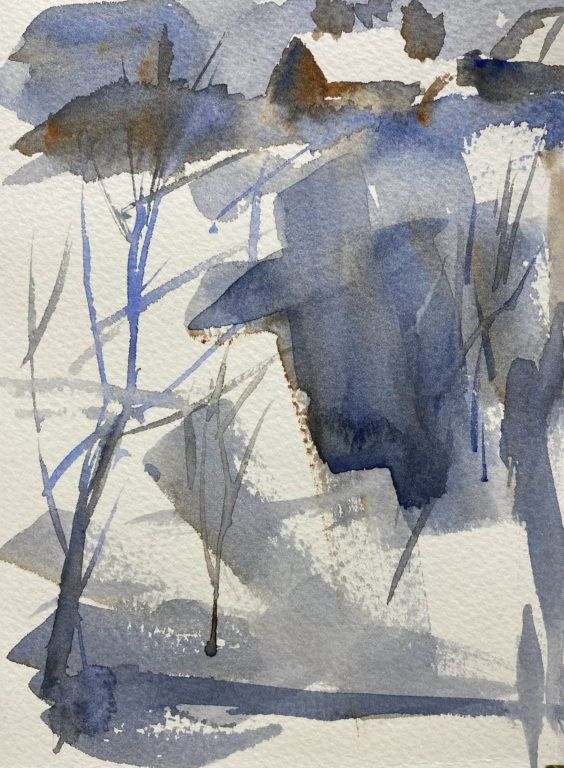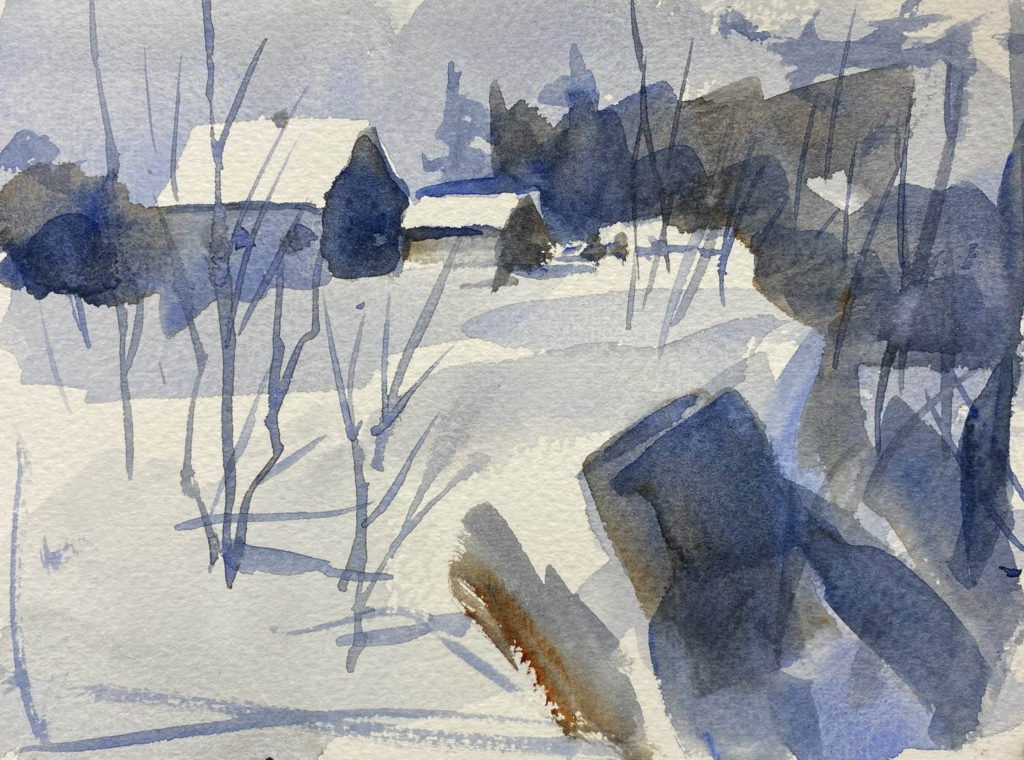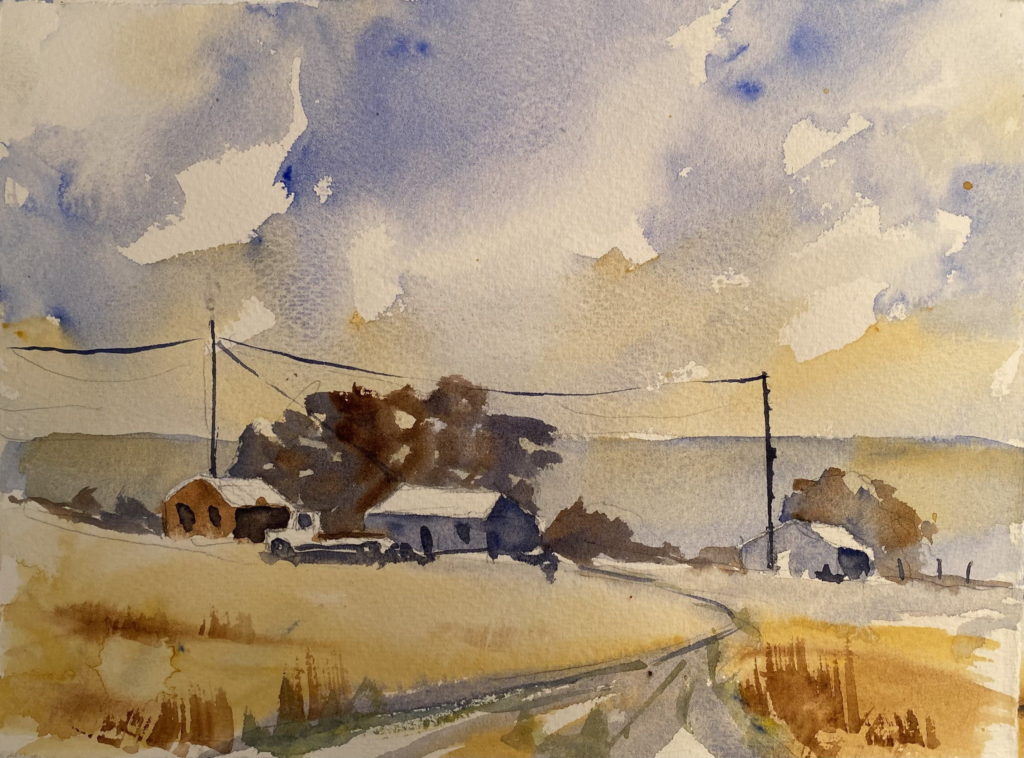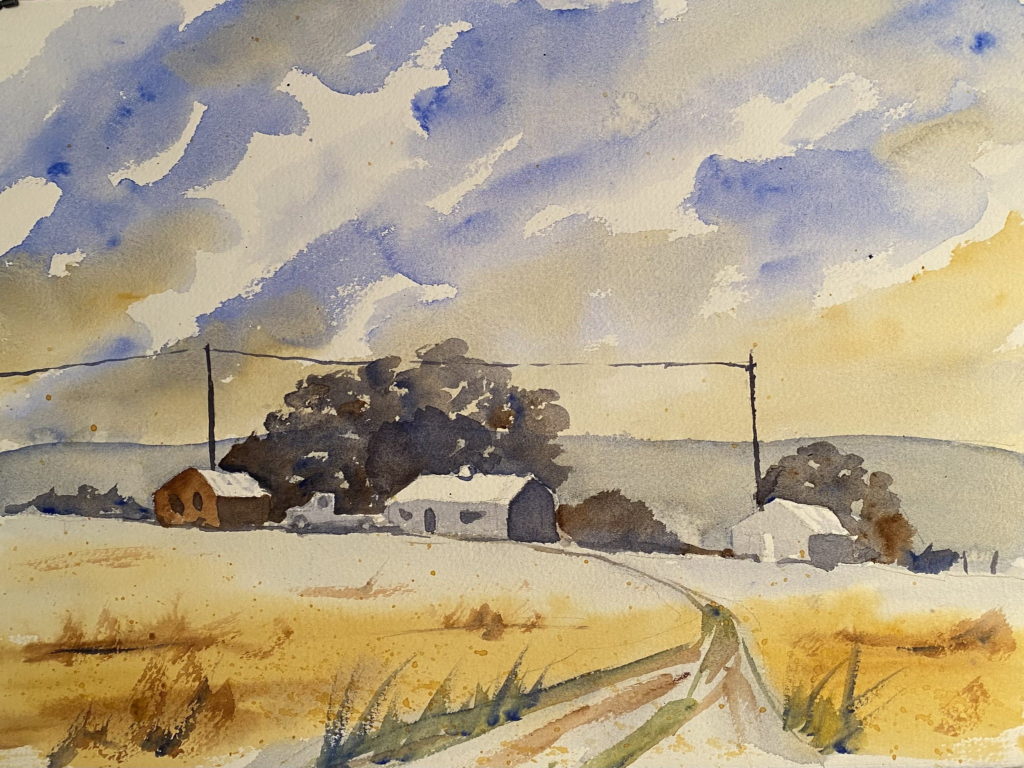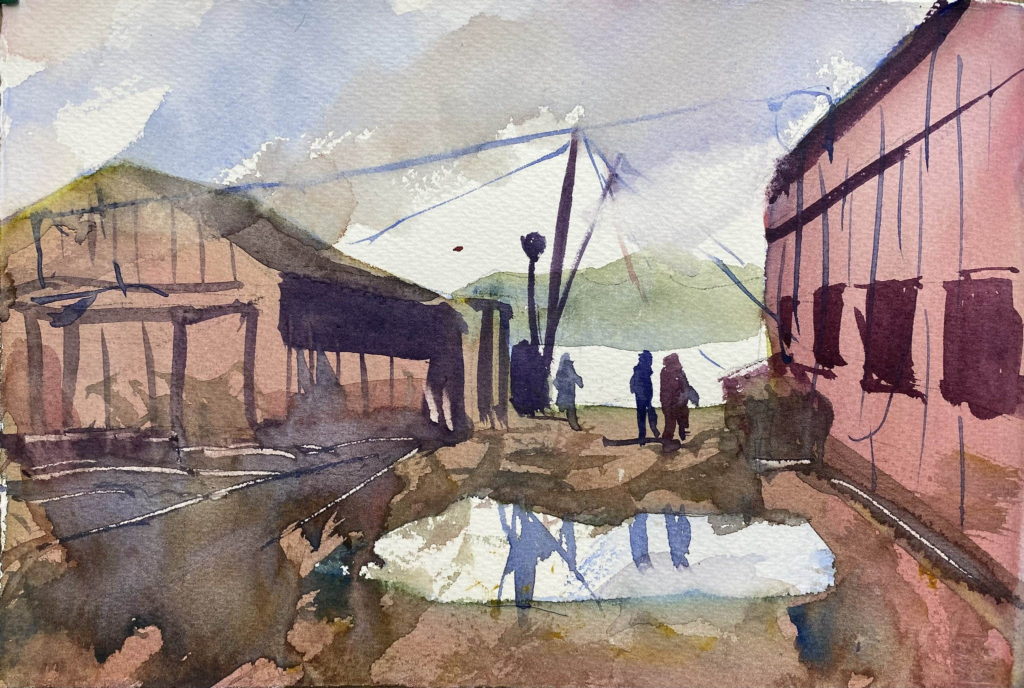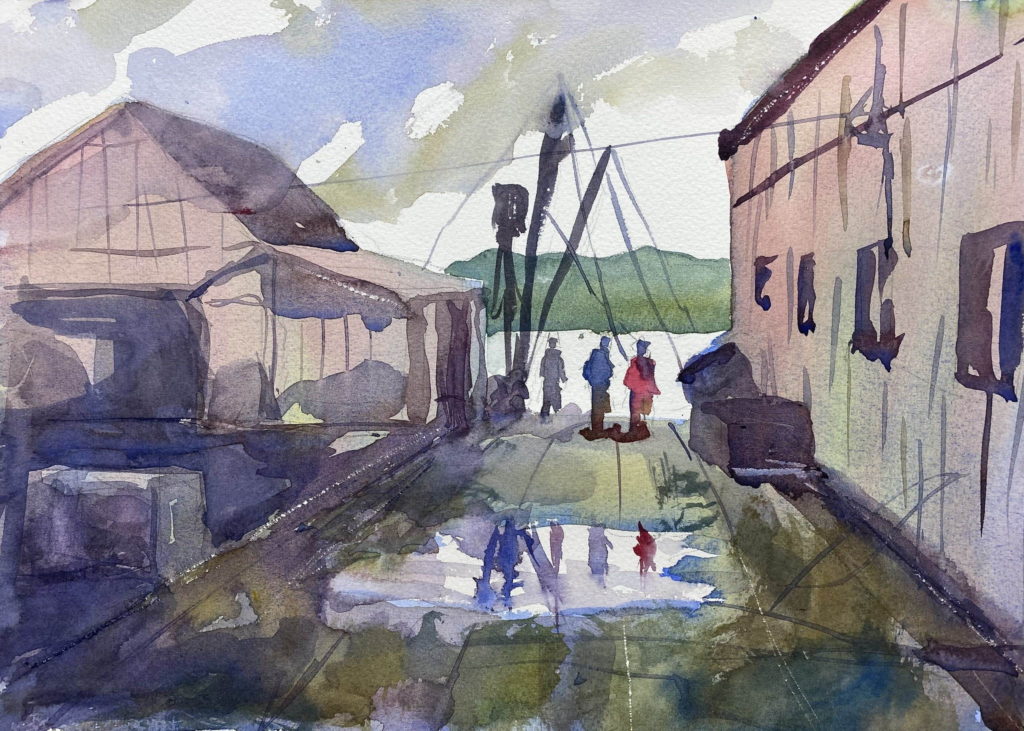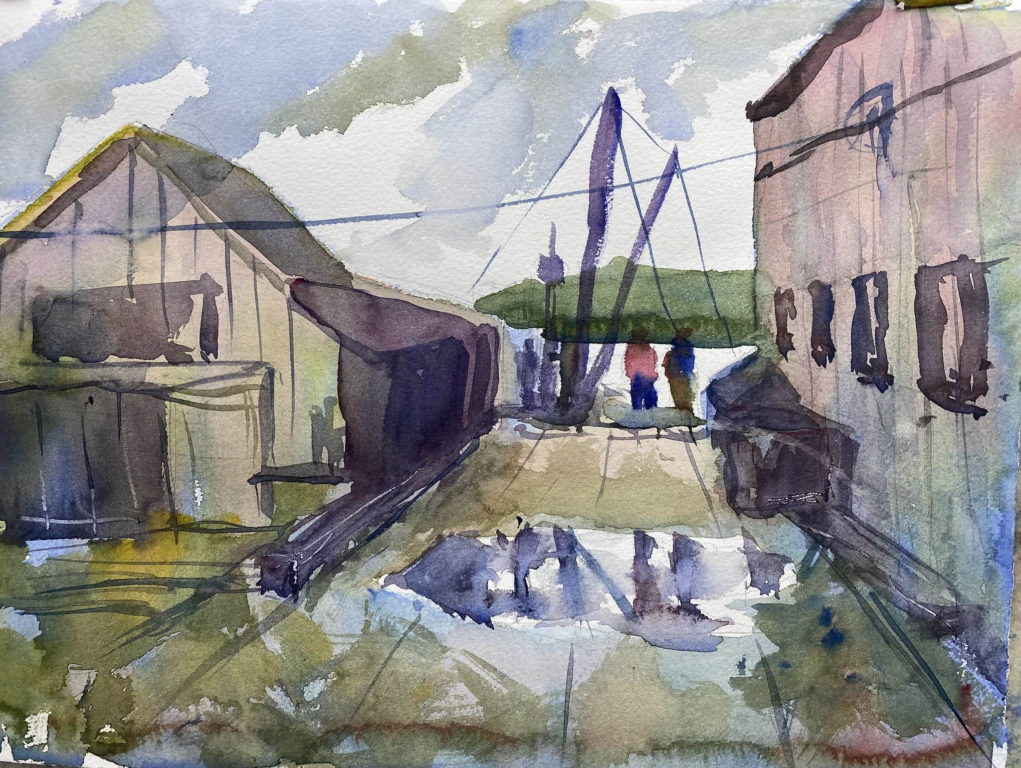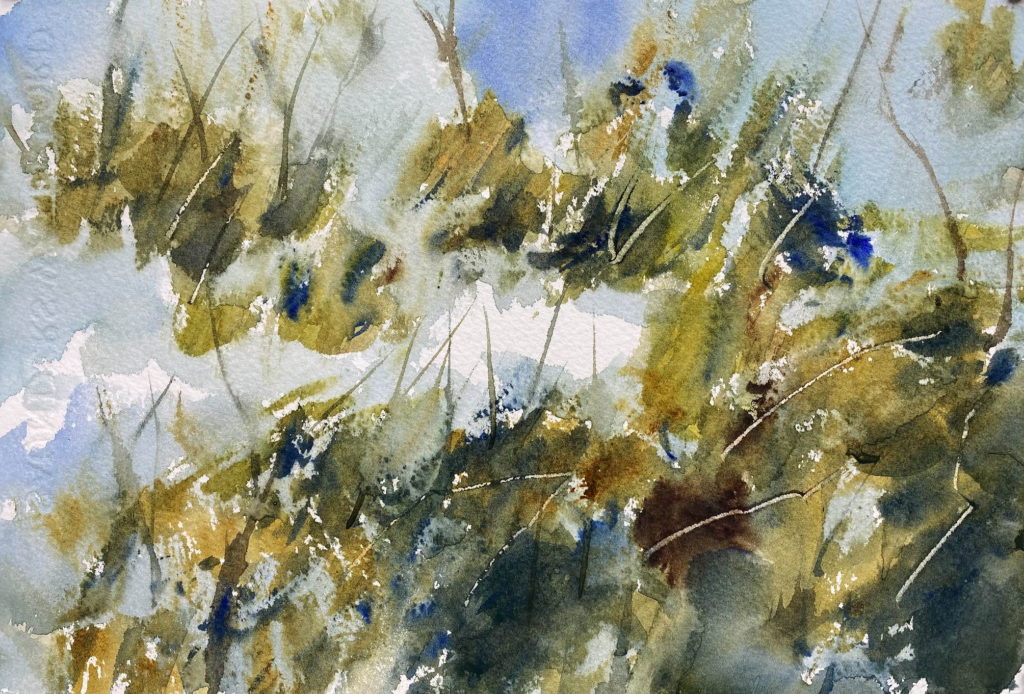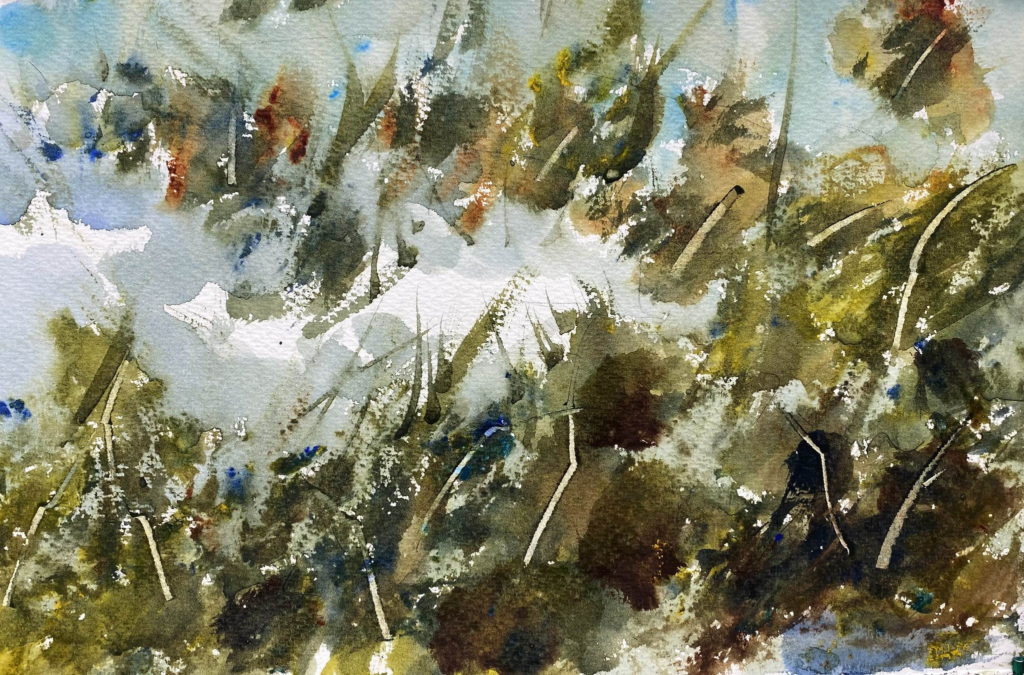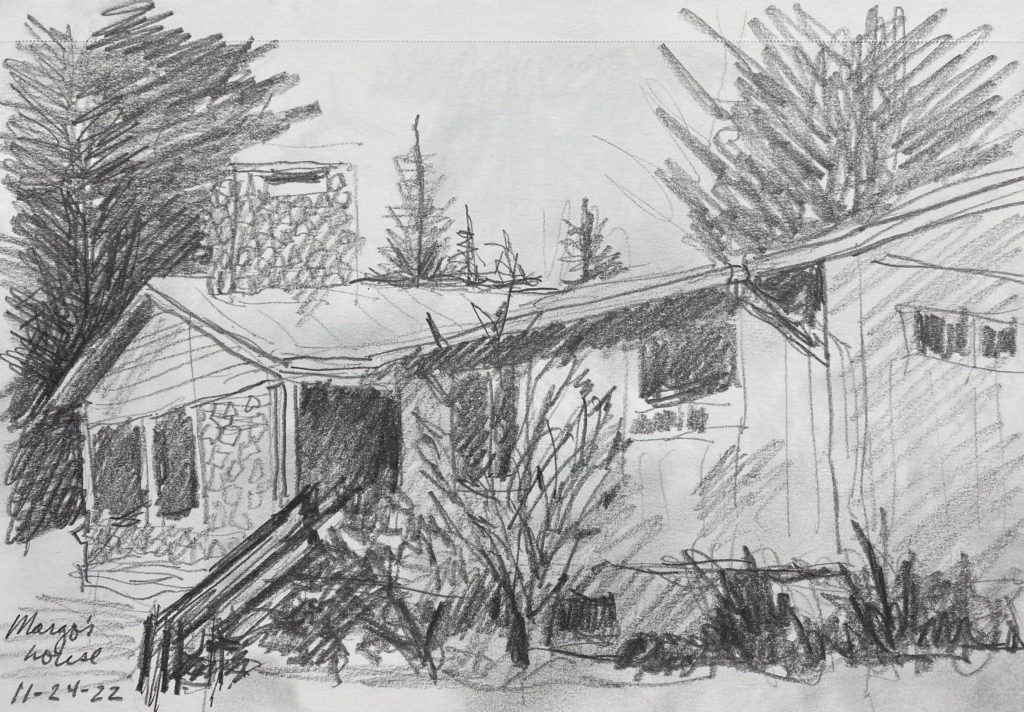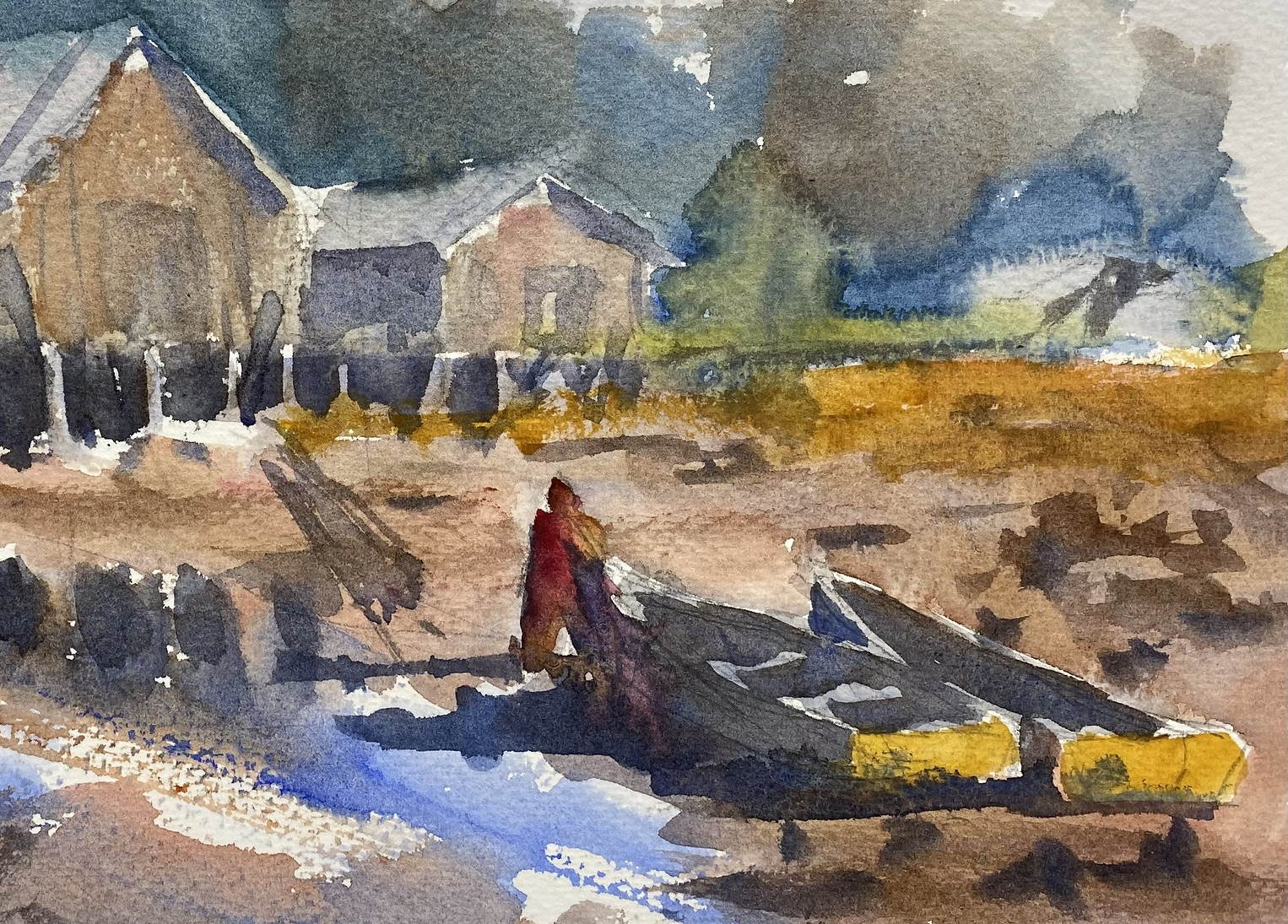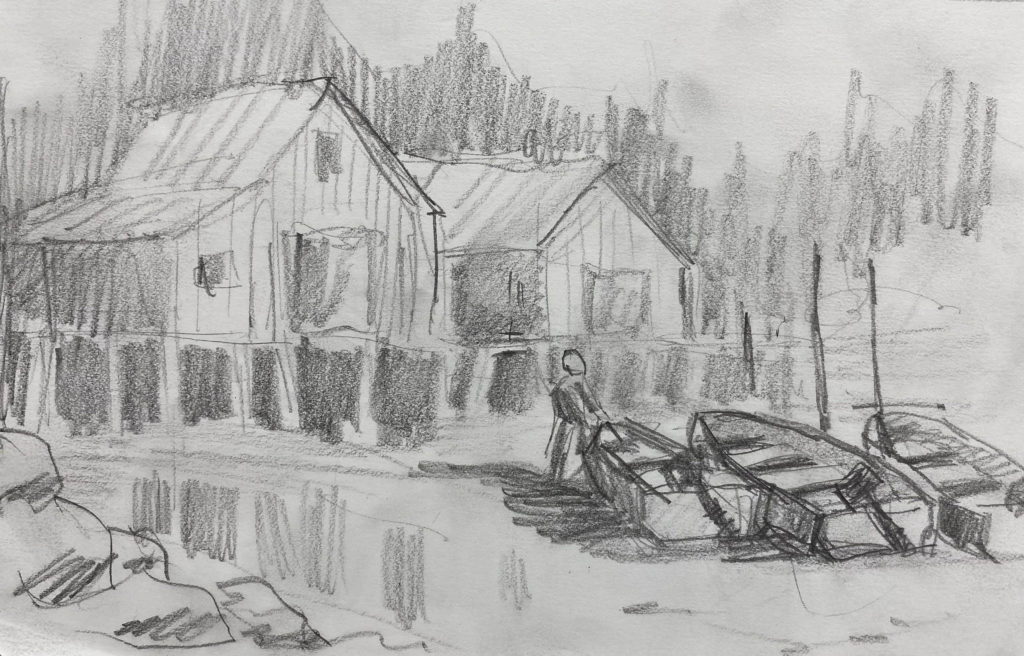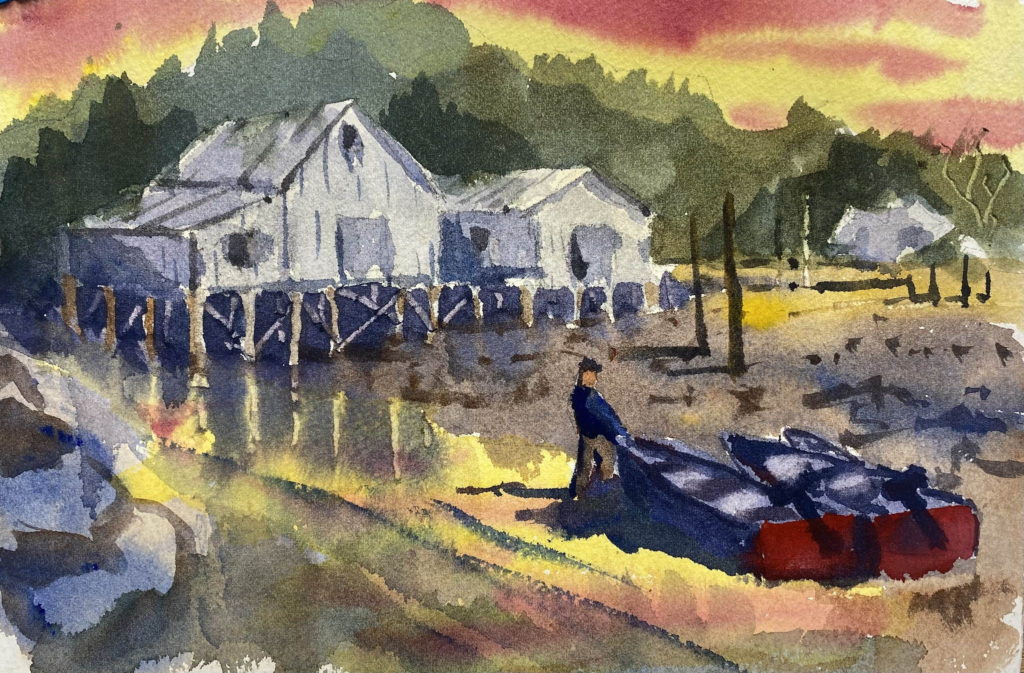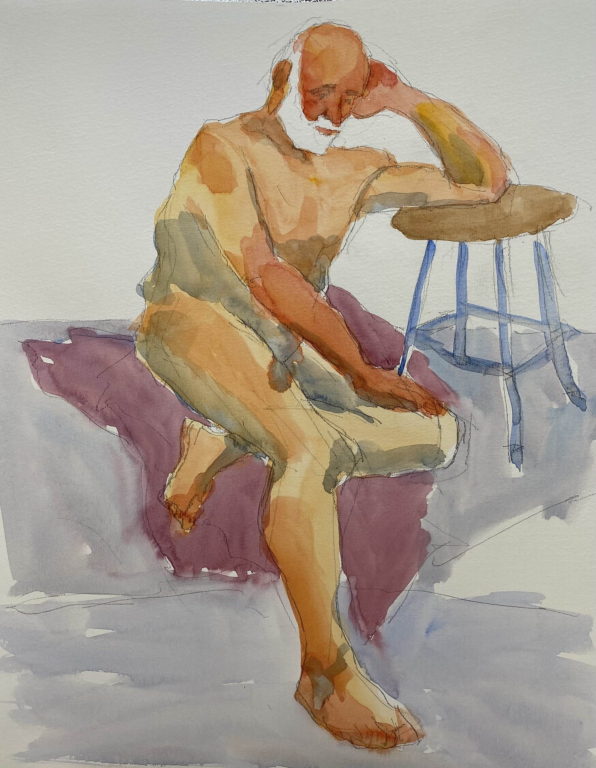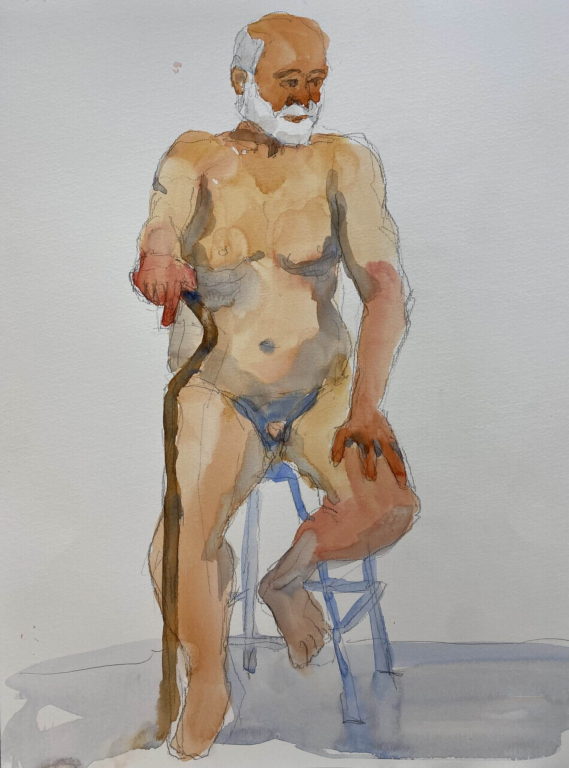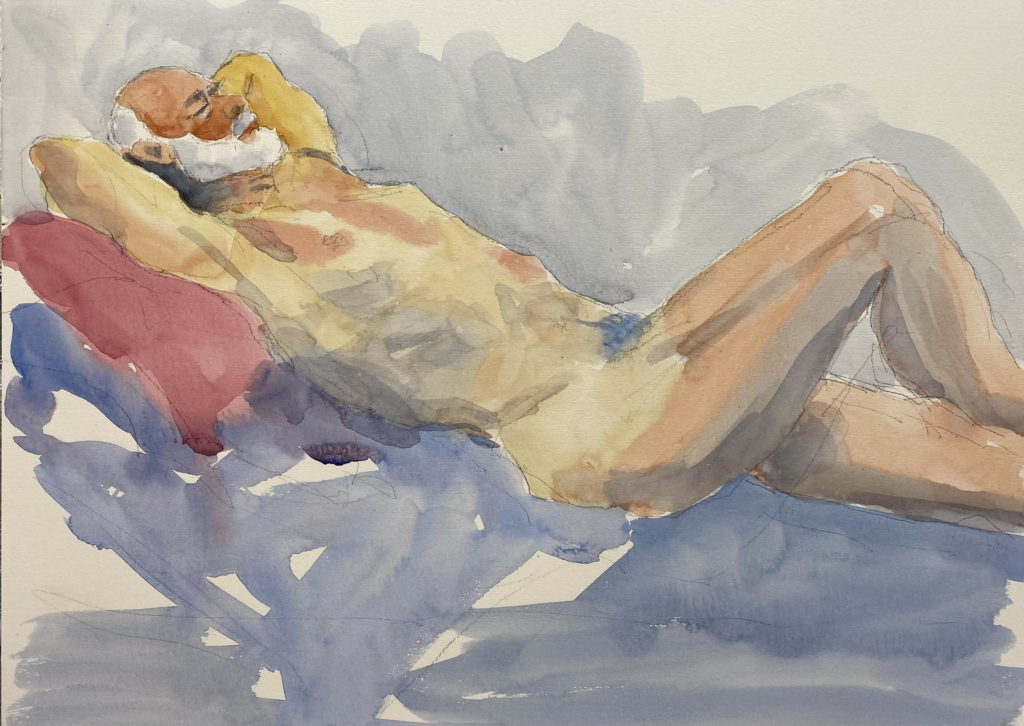Snow Creek farm series
For my homework for last Saturday’s watercolor class with Eric Wiegardt, I painted a farm I visited a couple of summers ago on Snow Creek near Discovery Bay. I wanted to show the hills behind the barn as misty, cloud-draped shapes, and keep the barn and silo as my center of interest. I wasn’t satisfied with my initial attempts, so I kept trying. I did a series of eight paintings all together. Here’s my best attempt and a photo of a bunch of the others.
Eric commented that this watercolor has good separation of values (light grass and dark trees), and he liked the lines showing the curve on the road. He liked the way the green tree color fades into the right side of the shed in the front, and he suggested that I add some color into the shadows of the barn. These gray shadows need to be warmed up with color from the grass.

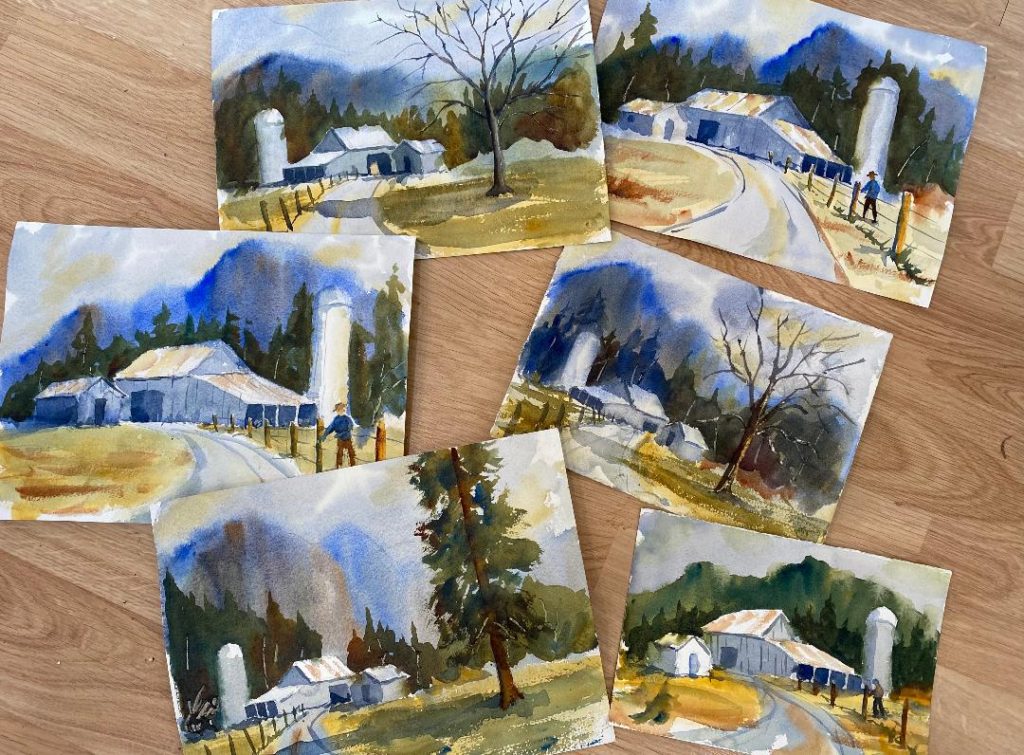
Snow Creek farm series Read More »
